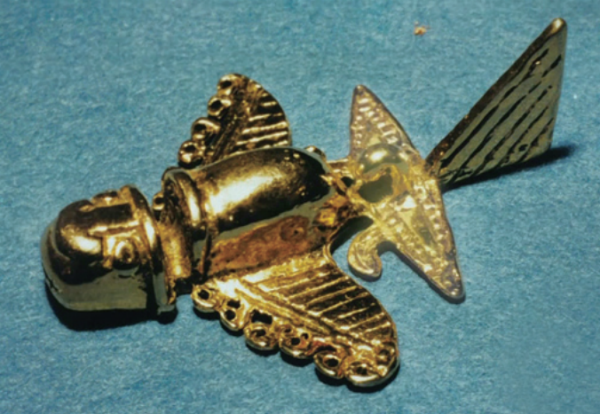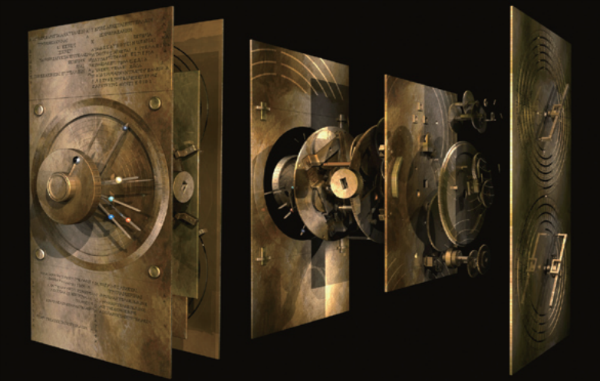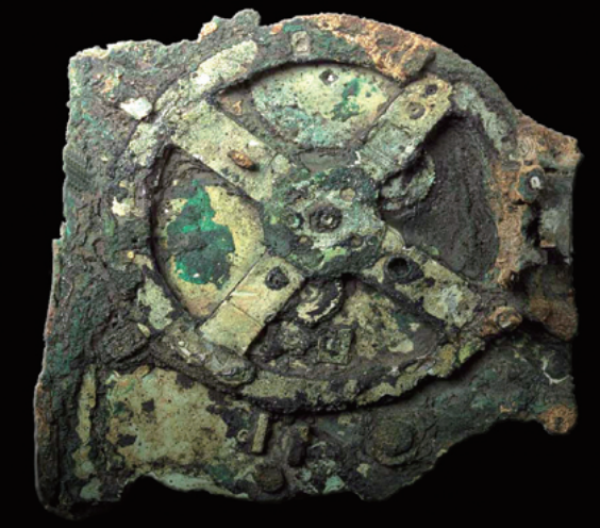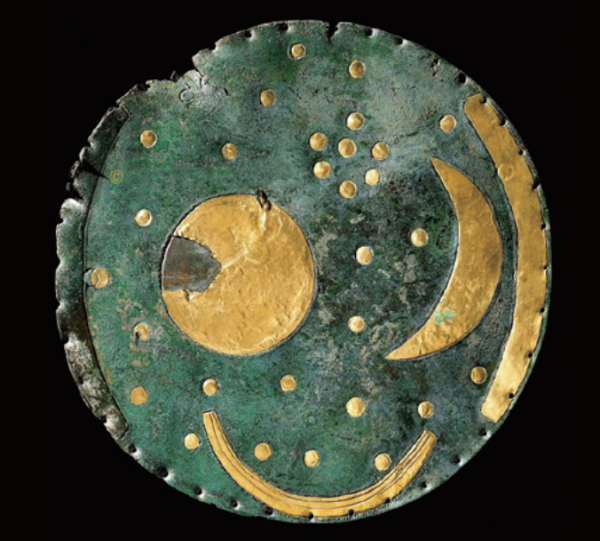Modern people are living in the most enlightened era of technology. Nowadays, various technologies that people could not even imagine in the past are being applied to our daily lives. For example, artificial intelligence (AI), augmented reality (AR), fifth generation mobile technology, the internet of things (IoT) and other high technologies are familiar to many people while they were totally unfamiliar to people of the past. Therefore, including some Kingos, modern people seem to believe they are more intelligent than ancient people. There are artifacts called “OOPArts”, however, that go against such modern people’s beliefs. As May 18th is International Museum Day, Sungkyun Times (SKT) now introduces these curious ancient artifacts called OOPArts that people can only generally see in museums.
Ancient Artifacts, OOPArts
Some people living in modern society view ancient people as barbaric while they were, in fact, much more intelligent than are sometimes given credit for. It is because of the spread of Charles Darwin’s evolution theory that persuaded people to form the opinion that ancient people with simple thought could have evolved into complicated and intelligent, modern people. Moreover, ridiculous common sense that ancient people believed, such as ‘the Earth is rectangular,’ strengthened such beliefs. Additionally, the fact that modern people are developing unimaginable technologies like searching deep sea or space, further intensifies modern people’s perceptions that they are more intelligent than ancient people.

Nonetheless, at the site of ancient excavations, various artifacts that challenge modern people’s beliefs have been discovered. These artifacts are what are known as OOPArts. OOPArts is an abbreviation of Out-Of-Place-Artifact. In literal terms, OOPArts mean incongruous artifacts found at excavation sites. Complex devices based on scientific knowledge which were believed to be unknown in ancient times, ancient articles of exquisite workmanship created with complicated technologies that were believed to be impossible at the time, and fossils that do not belong to normal archaeological date ranges have all been referred to as OOPArts. Structures with uncertain construction methods such as the Giza Pyramids or Stonehenge are also regarded as OOPArts in a broader definition. The word OOPArt, however, is usually used when referring to smaller artifacts.
The Origin of OOPArts
Originally, OOPArts emerged from the phrase ‘Out of place things’ that the zoologist Ivan Terence Sanderson first used in his book in 1967. Later, a writer, Lenny Novagen, used the term OOPArts in order to refer to fossils, artifacts, and other structures or items that were not supposed to be found on a particular excavation site. The first official report of OOPArts was in 1959, when a joint venture between China and the Soviet Union found a trail of shoe prints carved in the sandstone in the Gobi Desert. Thereafter, the discovery of the shoe trails on the sandstone marked the biggest portion of OOPArts.
Various Interpretations on the Existence of OOPArts
There are various interpretations on why OOPArts exist and exactly what they are. Some theories might seem unrealistic according to today’s knowledge and common sense. The first theory is that they are the result of a very developed ancient civilization. People who believe this theory insist that there was an ancient civilization which had more advanced technologies than that of modern society. The second theory is that there were special creatures who taught people various skills on the process of the development of civilization. These two theories are deemed as fantasy to many people; however, the last theory is gaining the biggest public support as the most convincing interpretations on the origins of OOPArts. It is the theory of OOPArts being a result of religious activities. Supporters of this theory believe OOPArts are simple artifacts created during religious activities and modern people are not able to understand the proper usage of the artifacts due to a lack of proper knowledge.
OOPArts - Real or Fake?
Fake OOPArts
There are more than 100 known OOPArts, but the verification of their authenticity is difficult. Therefore, there are various artifacts that are considered to be fake. There are a couple of reasons for the findings of fake OOPArts.
- Fake Scandals
Many fake OOPArts are results of manipulations for economic gain or aspirations to make fantasy into reality. OOPArts are an easy way to get the attention of the world-wide press and it can bring a great amount of economic benefit. For instance, crystal skulls found at the Mayan excavation sites by Mitchell Hedges surprised the world with their great craftsmanship techniques. The crystal skulls were rated at a Mohs hardness factor of seven, and showed incredibly sophisticated craftsmanship techniques. Researchers were amused at the fact that ancient Mayans had such delicate skills, and the crystal skulls became an eye-catching topic in movies and literature. Unfortunately, through more detailed observation, mechanical marks were discovered and it turned out that the skulls had actually been manufactured sometime after the 19th century.
- Misperception on Artifacts
There have been some cases in which a lack of knowledge and skills on the excavation had led to a misunderstanding on artifacts. As a result, although they were just ordinary things during the ancient times, some artifacts wrongly got labelled as OOPArts. For example, the Inca’s aircraft-like gold artifacts were unearthed in Sinú, located in the northern region of Colombia. Many researchers got excited at the possibility that there might have been an aircraft-like structure thousands of years ago. Unfortunately, a suggestion that it was not an airplane but actually a description of a hypostomus plecostomus (pleco), a tropical fish with big pectoral fins living in that area, became the general opinion in the end.


True OOPArts
Among the various OOPArts with fake scientific evidence or no evidence, there exists three true OOPArts with scientific authenticity.
- Ancient Computer - The Antikythera Mechanism
In the 1900s, the Antikythera Mechanism was discovered within the wreck of a Greek ship that is estimated to have been wrecked about 2,000 years ago along the coast of the Greek island, Antikythera. The machine was estimated to be made in 150 B.C, and for a long period of time, researchers had difficulties finding out the usage of the machine. With continuous research, researchers finally found several detailed machines inside the Antikythera Mechanism by using x-ray. The Antikythera Mechanism was a computer that calculated the movement of the solar system. When people inputted dates, the machine changed the location of the planets and showed the location of the sun, moon, and various stars according to the date. The most similar machine to this was found in the Middle East in the 13th century, which was more than 1,200 years later. Moreover, the machines that were complex like this were thought not to be able to be made until the 19th century. The Antikythera Mechanism has similar technical functions to those of a modern computer’s progenitor with an automatic calculation system, which was designed by the British mathematician Charles Babbage in the 1830s.


- Prehistoric People’s Understanding of Space – The Nebra Sky Disc
The Nebra Sky Disc was found in 1999 in Germany. It is estimated that it was made about 3000 to 4000 years ago during the Bronze Age. The Nebra Sky Disc shows that the Nebra people of the Bronze Age had a realistic understanding of space. While other civilizations treated the sun, moon, and stars as mythical or religious phenomena, people living in the Nebra region grasped the true nature of the moon, sun, and stars and collectively expressed this on the Nebra Sky Disc. Before the discovery of the disc, researchers did not believe that prehistoric people could have such an advanced and realistic knowledge on celestial events. It was because it took more than 100 years for ancient Egyptians to express a realistic sun, moon and stars with a more undeveloped form than that of the disc, and it wasn’t until 1000 years after that the expression of the celestial events in characters was possible. Based on these perceptions, the Nebra Sky Disc’s technology was significant to many researchers, and in 2013 it was suggested to be registered on the UNESCO Memory of the World List.


The First Print in History – The Phaistos Disc

T h e P h a i s t o s D i s c w a s unearthed in Crete, Greece. The Phaistos Disc was created by making stamps of pictographs, pressing those stamps on wet clay, and finally hardening it on the fire. This process perfectly accords with the concept of printing that is accepted in academia. The Phaistos Disc was created about 3,000 years ahead of the ancient Chinese Song Dynasty’s document known as the first letter press printing made in the 10th century. The letters of the disc are not solved perfectly yet and many researchers are still studying the disc to read the pictographs.
Problems that OOPArts are Confronting
The Loss of OOPArts
Many OOPArts were lost due to wars between countries, along with a poor system of maintaining them. For instance, as the Iraq war broke out, The Bagdad Battery presumably manufactured around 200 B.C. was lost. The Bagdad Battery was found in the capital of Iraq, Bagdad. It was assumed to be a battery, but some people argued that it was just a wine jug. As controversies arose, researchers tried to research again but they could not because the Bagdad Battery had been lost. The Mayan crystals skulls were also lost due to a poor management system. After the suggestion that the Mayan crystal skulls were fake and this suggestion became the general idea of the public, people managed the crystal skulls poorly and consequently, they also ended up lost. Therefore, researchers who attempted to research the Mayan crystal skulls again by using the number π to find out whether the machinery marks were really made after the 19th century could not carry out the research.
Undervaluing the Importance of OOPArts
The loss of OOPArts may be the result of neglecting their importance. Many researchers are turning away from OOPArts due to a large number of fakes that have been unearthed. Although natural science also has many manipulations, scientists are continuously researching the subject while disregarding OOPArts as an object of study. It is unfair to neglect ooparts for this reason. If such trend continues, people will lose the secret keys to our ancient ancestors’ wisdom that has been left for us. That is why the study on OOPArts should be carried on regardless of a low possibility of finding scientific value through the study
Ways to Solve the Problems
In the fields of archeology and paleontology, which study fossils of ancient plants and animals, researchers have to deviate from the attitude of delaying research on various objects that do not fit into the excavation place of a specific period by simply referring to them as OOPArts. Continuous study is also required.


There are no definite answers as to whether modern society is smarter than the people of ancient times or not. When OOPArts are found, however, people say they cannot believe ancient people used such sophisticated techniques and complicated scientific principles in the past. Rather than not being able to believe that ancient people used developed technologies, it seems that people do not want to break their belief that modern people are smarter than ancient civilizations.
